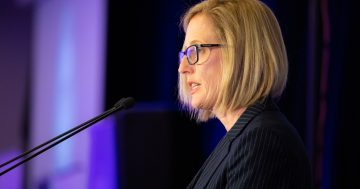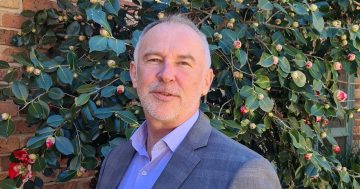
The Australian Public Service Commission has released the latest APS employment data. Photo: Michelle Kroll.
The Commonwealth public service headcount has jumped almost 10 per cent in 12 months, according to the latest data released by the Australian Public Service Commission.
As of December last year, there were 177,442 APS employees, 9.9 per cent higher than the same time in 2022.
That’s almost 16,000 more jobs filled, making it the highest total of APS employees in a decade.
Of the total headcount, 89.9 per cent are ongoing (up 10.9 per cent from 2022) and 10.1 per cent are non-ongoing (up 1.6 per cent).
There were 26,764 ongoing engagements over the 12 months and 11,065 ongoing separations.
The ACT is home to 38.1 per cent of the entire APS workforce, with 67,552 located in the capital.
NSW and Victoria each claim more than 29,000 APS employees, while Queensland hosts more than 22,000.
The other states and territories all have APS employees in the low thousands, and there were 1369 staff located overseas as of December.
The diversity count in the APS is not growing so fast.
First Nations employees represent 3.5 per cent of the workforce, down 0.2 per cent from the previous year.
Employees with disabilities rose 0.1 per cent to account for 5.2 per cent of total staff.
Female employees account for 60.4 per cent of the APS workforce, up 0.1 per cent from December 2022.
The number of employees who were born overseas has increased by 0.9 per cent.
Full-time employees make up 83.8 per cent of the workforce (up 1.5 per cent).
However, the number of part-time and casual employees has dropped -7 per cent. Part-time is 12.2 per cent, and casual is 4.1 per cent.
Employees aged 50 and over account for the largest proportion of staff at 32.5 per cent, followed by 40 to 49-year-olds filling 27.7 per cent of positions.
Those aged between 30 and 39 fill 24.4 per cent of APS jobs, and under 30s account for 15.3 per cent.
The APS6 classification has the most staff (23.2%), followed by Executive Level 1 (20.6%), APS 4 (17.3%), APS 5 (14.5), APS3 (13.7%) and EL2 (8.8%).
The SES claims 1.9 per cent of APS roles.
The APSC releases snapshot data every six months to provide a statistical outline of the APS workforce employed under the Public Service Act 1999.
The latest APS employment data released gives key workforce metrics as at 31 December 2023, as well as trends from 2004.
The data is provided by agencies and is drawn from the Australian Public Service Employment Database.
The employment data includes demographic variables, including age, gender and work location; the classification level of APS employees from trainee to Senior Executive Service; diversity data, including voluntary items self-reported by APS staff, such as disability status, Indigenous status, and cultural diversity; and staff movements, including engagements, separations, promotions and transfers between agencies.
“The reported size of the APS workforce is a headcount of all people employed at the time of the snapshot,” the APSC says of the newly released data.
“This figure does not adjust for hours worked and it includes any employees who are on extended leave (for three months or more), including those on maternity leave and leave without pay.
“Headcount is different to Average Staffing Level (ASL) data provided in the Federal Budget papers.
“The ASL counts staff for the time they work. For example, a full-time employee is counted as one ASL, while a part-time employee who works three full days per week contributes 0.6 of an ASL.
“The ASL averages staffing over an annual period. It is not a point in time calculation.”




















